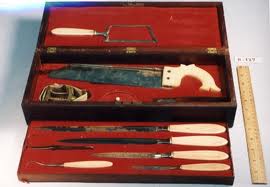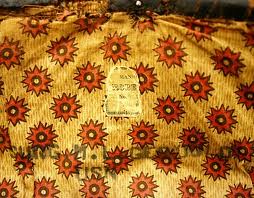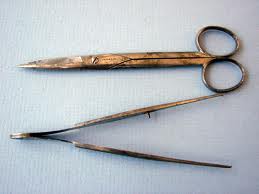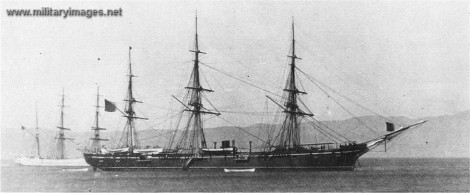
CIVIL WAR SURGEON
Late of Newmarket, died. 29 Dec 1894
Leach, Thomas W. Regular officer; b. Newmarket; age 22; res. Newmarket; app. Asst. Surg. July 28, ‘58; Surg. May 21, ‘62; Medical Inspector Apr. 5, ‘75; served on U. S. S. “Brooklyn,” “Lackawanna” and West Gulf Squadron; placed on retired list Jan. 17, ‘85. P. O. ad., Newmarket. (Record, Ayling’s Register, 1895, p. 1139.)
Thomas was born in Newmarket, May 12, 1836, and was the elder son of Thomas F. and Sarah A. (Wiggin) Leach. His preliminary education was received in the public schools of  Newmarket, and his professional education commenced in 1854, under the direction of the late George Washington Kittredge, M. D., of Newmarket, and was supplemented by courses of lectures in the Medical Department of Harvard College, from which he was graduated M. D. in 1857.
Newmarket, and his professional education commenced in 1854, under the direction of the late George Washington Kittredge, M. D., of Newmarket, and was supplemented by courses of lectures in the Medical Department of Harvard College, from which he was graduated M. D. in 1857.
(Photo: Civil War Surgeon’s amputation kit)
After graduation he passed the required examinations and received his first commission, signed by President Buchanan, January 26, 1859, having been appointed an assistant surgeon July 29, 1858, and was attached to the steam frigate “Niagara, ” and ordered to the west coast of Africa. From 1859 to 1861, he was attached to the home squadron and stationed at the naval hospital in New York. He was commissioned surgeon May 21, 1862, and assigned to the steam sloop “Lackawanna. ”
During the civil war his service was largely in the Gulf Squadron and from 1865 to 1867 at the naval hospital in New York. From 1867 to 1870, he was assigned to the Asiatic Squadron and on duty to the steamer “Iroquois.” From 1870 to 1872, he was stationed at the Portsmouth (N. H.) navy yard, and from 1872 to 1874, was fleet surgeon of the North Atlantic Station, the flagships being the “California” and the “Richmond.” In 1874 and 1875, he was the fleet surgeon of the Asiatic Squadron, the flagship being the “Hartford.”
Surgeon Leach was commissioned medical inspector April 5, 1875, and assigned to duty on the board of examiners at Washington, D. C. In 1878 he was delegate to the American Medical Association and served upon the board of examiners for admission of candidates at Annapolis. In 1879 and 1880 he was at the navy yard in Boston; in 1880 and 1881, navy yard at Portsmouth, N. H.; 1882, special duty at Portsmouth, N. H.; 1882 and 1883, he was fleet surgeon of the North Atlantic Squadron and July 5, 1883, he was granted sick leave and detached from the flagship “Tennessee,” and January 17, 1885, he was finally retired from active service on account of sickness, the result of duty and long and faithful service.
(Photo: Naval surgeon’s carpet bag)
 His biographer says of him: “That in the discharge of his official duties he was one of the most conscientious of men; always thoughtful of the health of officers and men, and ever ready with his services, night or day, as might be required. He was universally beloved by officers and men.”
His biographer says of him: “That in the discharge of his official duties he was one of the most conscientious of men; always thoughtful of the health of officers and men, and ever ready with his services, night or day, as might be required. He was universally beloved by officers and men.”
Upon being retired from the service, he returned to his native town, Newmarket, where he resided until his death, which occurred December 29, 1894, leaving one brother, George A. Leach. He was a member of the Masonic fraternity and was buried from the Congregational church in Newmarket under the auspices of the Rising Star Lodge, No. 47, of which he had been a member since 1858.
29, 1894, leaving one brother, George A. Leach. He was a member of the Masonic fraternity and was buried from the Congregational church in Newmarket under the auspices of the Rising Star Lodge, No. 47, of which he had been a member since 1858.
(Photo: Wade and Ford Naval Surgical set)
The first USS Lackawanna was a screw sloop-of-war in the Union Navy during the American Civil War. Launched by the New York Navy Yard on 9 August 1862, she was named after the Lackawanna River in Pennsylvania.
[In the 18th and most of the 19th centuries, a sloop-of-war was a warship (also known as one of the escort types) with a single gun deck that carried up to eighteen guns. As the rating system covered all vessels with 20 guns and above, this meant that the term sloop-of-war actually encompassed all the unrated combat vessels including the very small gun-brigs and cutters. In technical terms, even the more specialized bomb vessels and fire ships were classed as sloops-of-war, and in practice these were actually employed in the sloop role when not carrying out their specialized functions].

The new screw sloop-of-war departed New York on 20 January 1863 to join the Union blockade of the southern coast. She reported to the West Gulf Blockading Squadron at Pensacola, Florida early in February and, for the remainder of the war, served along the gulf coast of the Confederacy, principally off Mobile Bay. Lackawanna took her first prize — Neptune — on 14 June after a long chase in which the 200 long tons (200 t) Glasgow ship had jettisoned her cargo trying to escape. The Union sloop-of-war scored again the next day, capturing steamer Planter as the Mobile blockade runner attempted a dash to Havana, Cuba laden with cotton and resin.
Following duty along the Texas coast near Galveston in March-April 1864, Lackawanna returned to the blockade of Mobile early in May to prevent the escape of Confederate ram Tennessee. During the summer she served in the blockade while preparing for Admiral David Farragut’s conquest of Mobile Bay. On 9 July, with Monongahela, Galena, and Sebago, she braved the guns of Fort Morgan to shell steamer Virgin, a large blockade runner aground at the entrance of Mobile Bay. The Union guns forced a southern river steamer to abandon efforts to assist Virgin, but the next day the Confederates refloated the blockade runner who reached safety in Mobile Bay. Closing this strategic southern port was an important part of the Union strategy to isolate and subdue the South.
At dawn on the morning of 5 August, Farragut’s ships crossed the bar and entered the bay. A Confederate squadron, led by the ironclad ram Tennessee and a field of deadly mines awaited to block their advance. Farragut’s lead monitor Tecumseh struck a mine and went down in seconds. The Confederate flagship Tennessee vainly tried to ram Brooklyn and the action became general, raging for more than an hour. At one point in the struggle, Lackawanna rammed Tennessee at full speed, causing the Confederate ram to list, and later she collided with Hartford while attempting to ram Tennessee again, shortly before the ironclad struck. This daring operation closed the last major gulf port to the South.
Twelve of Lackawanna’s sailors received the Medal of Honor for their actions during this battle. Following the Union victory in Mobile Bay, Lackawanna continued to operate in the gulf, enforcing the blockade until after the end of the Civil War. She departed Key West on 24 June 1865, reached New York on the 28th, and decommissioned at New York Navy Yard on 20 July.
(source: This article incorporates text from the public domain, Dictionary of American Naval Fighting Ships)